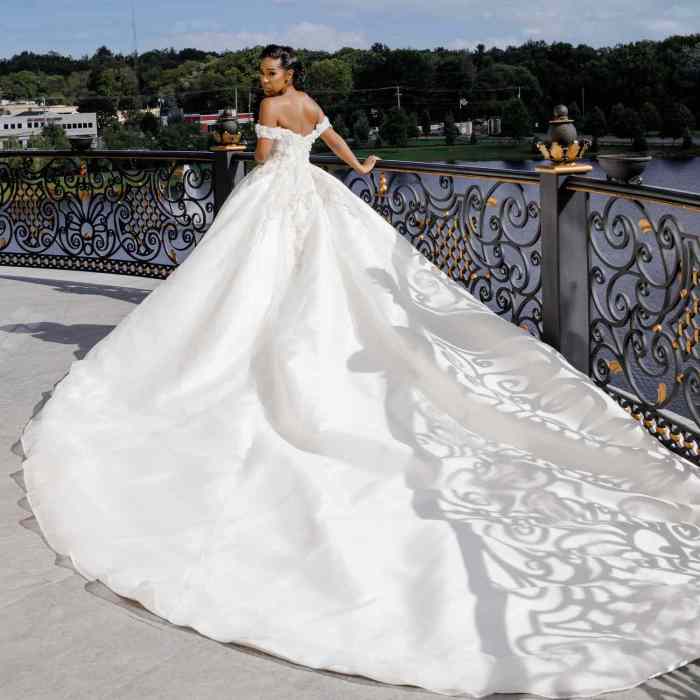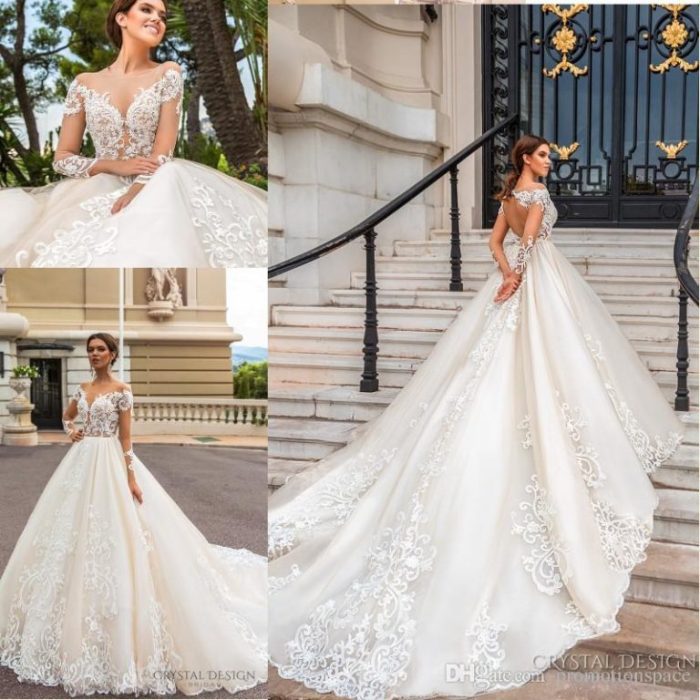Royal Train Wedding Dresses A Fashionable Journey
Royal Train Weddings: A Journey Through History and Fashion
Royal train wedding dresses – Royal weddings are spectacles of tradition, grandeur, and meticulously planned logistics. The journey to the ceremony itself often plays a significant role, and the use of a royal train adds a layer of historical significance and visual drama. This exploration delves into the fascinating intersection of royal train travel, wedding attire, and the cultural symbolism woven into these events.
Historical Context of Royal Train Travel and Weddings
Royal train travel has evolved significantly throughout history, mirroring advancements in technology and reflecting changing social norms. Early royal trains were more rudimentary, yet still conveyed a sense of regal authority. The increased use of trains in the 19th and 20th centuries provided a more efficient and comfortable mode of travel for royal families, especially for long distances. Significant royal weddings utilizing train journeys often served as powerful statements, showcasing national pride and the strength of the monarchy.
- Queen Victoria’s wedding in 1840 did not involve a train journey, highlighting the limited use of rail travel at that time for royal events.
- The increasing use of royal trains for weddings became more prominent in the late 19th and early 20th centuries, as railway networks expanded. Many royal weddings during this period involved the use of trains for the bride or other members of the royal family to travel to the ceremony.
- Specific examples of royal wedding attire worn during train travel are less documented, but it can be assumed that the gowns would have been designed with the journey in mind – perhaps featuring less elaborate trains or simpler silhouettes to facilitate movement and prevent damage.
A timeline showcasing key moments:
| Year | Event | Train Involvement | Attire Notes |
|---|---|---|---|
| 1840 | Queen Victoria’s Wedding | No train journey | N/A |
| 1910s-1930s | Various Royal Weddings (e.g., within European monarchies) | Increased use of trains for royal family travel | Likely simpler, more travel-friendly designs |
| Post-WWII | Increased use of private royal trains | Improved comfort and security | Gowns likely still considered travel practicality |
Fashion Evolution in Royal Wedding Dresses on the Train

Source: brides.com
The design and practicality of royal wedding gowns have been profoundly influenced by the mode of transport. Early gowns were likely simpler to accommodate train travel, emphasizing comfort and practicality over extreme embellishment. As train travel became more luxurious, the designs evolved, allowing for more elaborate details while still considering the needs of travel.
- The impact of train travel on design involved considerations of fabric weight and drape to prevent creasing during transit.
- The influence of designers varied across eras, with some prioritizing timeless elegance while others incorporated contemporary trends, always mindful of the practicalities of train travel.
A hypothetical modern royal wedding dress suitable for train travel might feature a structured bodice in a luxurious, yet relatively lightweight fabric like silk crepe or a high-quality mikado silk. The skirt could be a manageable A-line or sheath silhouette, perhaps with subtle pleating or draping, rather than an excessively large train. Embellishments could be strategically placed to avoid damage during transit.
The overall aesthetic would be elegant, sophisticated, and undeniably regal, yet practical enough for the journey.
The Practicalities of Royal Wedding Dresses on Trains

Source: sandiegotowingca.com
Transporting a royal wedding dress on a train presents unique logistical challenges. The dress’s delicate nature requires careful planning and execution to ensure its safe arrival. Specialized transport methods and protective measures are employed to prevent damage and maintain the gown’s pristine condition.
- The dress is typically transported in a custom-made garment bag or case, providing ample protection and minimizing the risk of wrinkles or damage.
- A dedicated member of the royal household or a trusted professional often accompanies the dress to oversee its handling and ensure its security throughout the journey.
- The train carriage might be climate-controlled to maintain a consistent temperature and humidity level, protecting the delicate fabrics from damage.
- Upon arrival, the dress is carefully unpacked and prepared by experienced dressmakers or stylists, ensuring it’s flawlessly presented for the wedding ceremony.
Cultural and Symbolic Significance of Royal Train Weddings
The choice of train travel for a royal wedding holds symbolic weight. It represents the monarchy’s connection to the nation, often showcasing the country’s progress and infrastructure. The fabrics and designs used in the wedding dress further amplify this cultural significance.
| Wedding | Train Journey Details | Dress Description | Cultural Significance |
|---|---|---|---|
| (Hypothetical Example 1) | Journey from London to Edinburgh | Classic A-line gown in ivory silk crepe, subtle lace detailing | Union of England and Scotland |
| (Hypothetical Example 2) | Journey across a vast country | Modern design, featuring national flower motifs | National unity and pride |
| (Hypothetical Example 3) | Short journey, symbolic of local connection | Simple gown, locally sourced materials | Regional identity and sustainability |
Visual Representations of Royal Train Weddings and Dresses, Royal train wedding dresses
Artistic representations of royal train weddings, from paintings to photographs, often emphasize the romance and spectacle of the event. The imagery frequently showcases the wedding dress as a central element, highlighting its beauty and symbolic importance within the context of the train journey.
- One hypothetical illustration might depict the royal couple boarding the train, the bride’s dress flowing gracefully behind her, emphasizing the journey’s beginning.
- Another could focus on the dress itself, perhaps displayed in a meticulously detailed close-up, showcasing the fabric’s texture and the intricate craftsmanship.
- A third illustration could portray the arrival at the wedding venue, with the train pulling into the station and the bride stepping out, the dress’s elegance highlighted against the backdrop of the event.
FAQ Explained: Royal Train Wedding Dresses
What types of fabrics are commonly used in royal train wedding dresses?
Historically, luxurious fabrics like silk, satin, lace, and fine embroidery have been favored for their elegance and durability.
How are royal wedding dresses protected from wrinkles during train travel?
Specialized garment bags, acid-free tissue paper, and careful packing techniques are employed to minimize wrinkles. Steam irons and professional dressers are often on hand upon arrival.
Are there any specific security measures taken during the transport of a royal wedding dress?
Yes, high levels of security are employed, often involving dedicated personnel, armored transport, and discreet travel arrangements.
Have any royal wedding dresses been damaged during train transport?
While there is no public record of major damage, the potential for incidents necessitates meticulous planning and preparation.



















